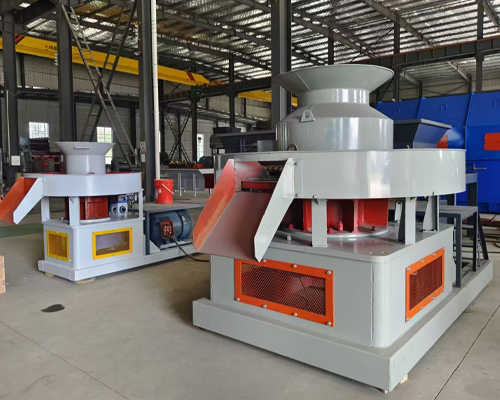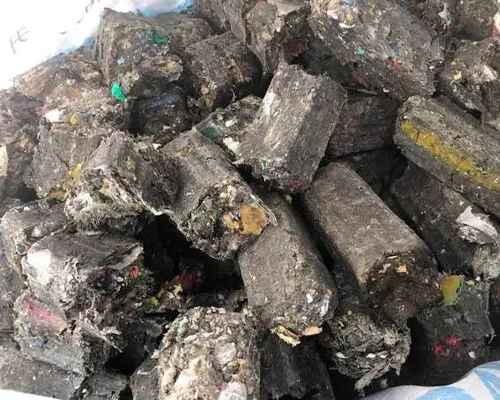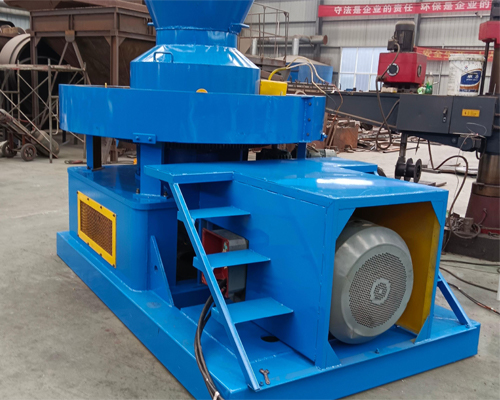Solid Waste Recycling Treatment-RDF Forming Machine
1). RDF refers to Refused Derived Fuel, which is a fuel made from combustible materials such as household garbage, office waste paper, and waste clothing after processing.

2). RDF Forming Machine is a device that converts recyclable organic waste into high-density solid fuel rods. This machine is often used in the waste management industry, especially those companies that focus on sustainable development and environmental protection. Here are some basic features of RDF Forming Machine.

1. Raw material processing: The equipment can process many types of waste, including but not limited to paper, plastic, wood fragments, etc. These raw materials need to be pre-processed, such as crushing, drying and other steps to ensure the quality and combustion efficiency of the final product.
2. Molding process: During the molding stage, the pre-treated material will be fed into the molding part of the rod making machine, extruded through the die under high pressure to form fuel rods with a certain size and shape.
3. Cooling and curing: The molded fuel rods usually require a cooling and curing stage to ensure that they can maintain their shape and are not easy to break during transportation and use.
4. Quality control: In order to ensure the quality of RDF Forming Machine, quality inspection is also required during the production process to check whether the key indicators of the fuel rods, such as density, calorific value, and ash content, meet the standards.
5. Environmental benefits: The use of RDF Forming Machine not only helps reduce the amount of waste landfill, but also provides an alternative energy source, thereby reducing dependence on fossil fuels.

3). Working principle
The main working process of the RDF (Refused Derived Fuel) Forming Machine is as follows:
1. Raw material preparation: First, the collected combustible waste (such as waste paper, plastic, sawdust, etc.) is pre-treated, including a series of operations such as removing impurities, crushing, screening, and drying to ensure the uniformity and adaptability of the raw materials.
2. Feeding: The pre-treated raw materials are fed into the hopper of the RDF Forming Machine through a conveying system.
3. Compression molding: Inside the rod making machine, the raw materials are compressed by a screw propeller or other forms of compacting devices under high temperature and high pressure and extruded through a mold of a specific shape to form the required fuel rods.
4. Cooling and shaping: The extruded fuel rods need to be cooled by a cooling device to facilitate shaping and prevent deformation.
5. Subsequent processing: The formed fuel rods may be further processed, such as cutting into fixed lengths, and then packaged for storage or sold directly.
4). Advantages
1. Environmental protection and energy saving: RDF Forming Machine can effectively utilize the combustible components in urban domestic waste and other industrial waste, reduce waste landfill, and provide alternative energy, reducing the demand for traditional fossil fuels.
2. Economic benefits: Through waste reuse, the processing cost is reduced, and the fuel rods produced can be used as fuel for industrial boilers or power plants to create additional income.
3. Strong applicability: It can handle various types of waste and has high flexibility.
Model | Power(KW) | Capacity(T/H) | Mold quantity | Roll quantity | Over dimension(MM) |
9JK-2600 | 75 | 1-2 | 52 | 2 | 2647*2100*1900 |
9JK-3500 | 110 | 2-3 | 72 | 2 | 3250*2600*2000 |
9JK-4500 | 132 | 3-4 | 88 | 2 | 3350*2800*2200 |
9JK-5000 | 160 | 4-5 | 100 | 2 | 3000*2300*2000 |
9JK-5500 | 160 | 4-5 | 102 | 2 | 3000*2400*2000 |
9JK-6500 | 200 | 4-5 | 120 | 3 | 4400*2970*2495 |
-
 Trommel screenTrommel screen, also known as drum screens, are widely used in various industries for sorting and separating materials.Get Quote
Trommel screenTrommel screen, also known as drum screens, are widely used in various industries for sorting and separating materials.Get Quote -
 Crop straw double shaft shreddApplications:Biomass Energy Production: Shredded straw can be used as a feedstock for bioenergy plants to produce electricity or heat.Livestock Feed: Reduced-si...Get Quote
Crop straw double shaft shreddApplications:Biomass Energy Production: Shredded straw can be used as a feedstock for bioenergy plants to produce electricity or heat.Livestock Feed: Reduced-si...Get Quote -
 Zhongcheng Air Drum SeparatorAir drum separators effectively separate lightweight materials (e.g., plastics, paper) from heavier materials (e.g., metals, glass). This high efficiency is cru...Get Quote
Zhongcheng Air Drum SeparatorAir drum separators effectively separate lightweight materials (e.g., plastics, paper) from heavier materials (e.g., metals, glass). This high efficiency is cru...Get Quote
-
2024-10-23Solid waste recycling plantOur company engaged in waste sorting system . We are professional about waste sorting system . We have professional technical team. Professional technical team...
-
2024-05-18Jaw CrusherThe working principle of jaw crusher Although the jaw crusher has various structural types, its working principle is the same, that is, the material is crushed ...
-
2024-08-22Medical waste shredderWorking Principle:Feeding Mechanism: Medical waste is fed into the shredder through a hopper or chute. The feeding mechanism ensures that the waste is introduce...
-
2023-01-12Impact CrusherImpact crusher is a type of machine designed to reduce large rocks, ores, and other hard materials into smaller, more manageable pieces. This equipment is widel...
-
2023-01-12Conveyor BeltGarbage conveyor/Trash conveyor belt system is a processing line to classify paper, plastic, metal, glass, and organic matter and realize the recycling of rubb...



